Small overlap front: driver-side
Rating applies to 2010-13 models built before January 2013
Tested vehicle: 2012 Mercedes-Benz C 250 4-door
The Mercedes-Benz C-Class was redesigned for the 2008 model year. Beginning with 2010 models, an airbag for the driver's knees was added to improve occupant protection in frontal crashes.
| Evaluation criteria | Rating |
|---|---|
| Structure and safety cage | |
| Driver injury measures | |
| Head/neck | |
| Chest | |
| Hip/thigh | |
| Lower leg/foot | |
| Driver restraints and dummy kinematics The dummy’s head remained in contact with the frontal airbag, but its head still moved toward the intruding A-pillar because the seat belt allowed excessive forward excursion of the dummy's head and torso. The side curtain airbag did not deploy, leaving the dummy's head vulnerable to contact with side structure and outside objects. | |
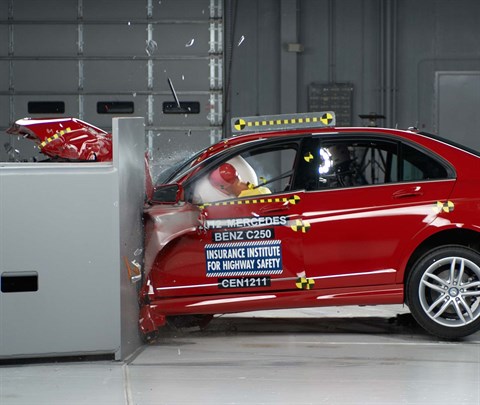
Action shot taken during the first of two small overlap frontal crash tests.
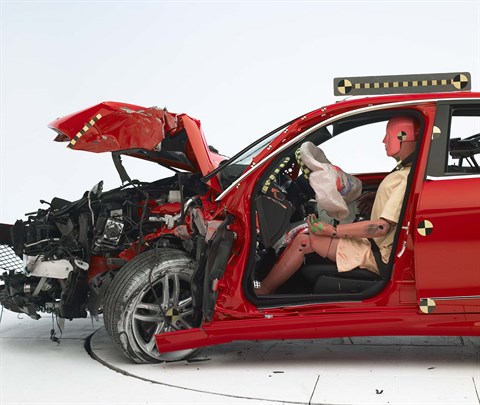
The dummy's position in relation to the door frame, steering wheel, and instrument panel after the crash test, together with the footwell intrusion, indicates that the driver's survival space wasn't maintained well (first test shown).
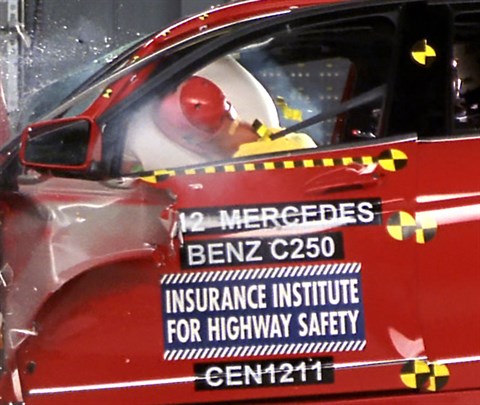
In the first test, the seat belt allowed far too much forward movement of the dummy to the extent that its head came close to hitting the intruding A-pillar. The side curtain airbag did not deploy, further adding to injury risk.
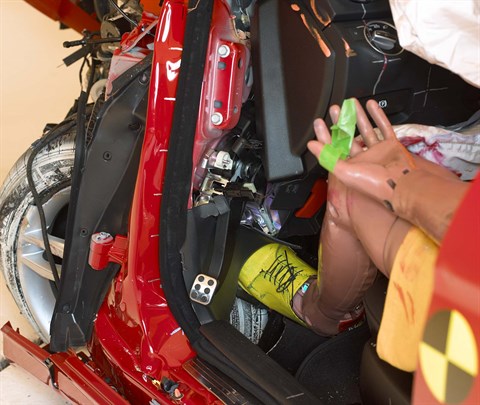
In both tests, intrusion into the driver footwell was extensive. The dummy's right foot was trapped by intruding structure and the brake pedal as the left front wheel was forced rearward and inward during the crash. (The tire, painted white for visibility, can be seen just below the dummy's left foot after the first test.)
Moderate overlap front: original test
Rating applies to 2010-14 models
Tested vehicle: 2010 Mercedes-Benz C 300 4-door
The Mercedes-Benz C-Class was redesigned for the 2008 model year. Beginning with 2010 models, an airbag for the driver's knees was added to improve occupant protection in frontal crashes. Moderate overlap frontal ratings are assigned by the Institute based on a test conducted by Mercedes-Benz.
| Evaluation criteria | Rating |
|---|---|
| Overall evaluation | |
| Structure and safety cage | |
| Driver injury measures | |
| Head/neck | |
| Chest | |
| Leg/foot, left | |
| Leg/foot, right | |
| Driver restraints and dummy kinematics | |
Side: original test
Rating applies to 2009-14 models
Tested vehicle: 2009 Mercedes-Benz C 300 4-door with standard front and rear head curtain airbags and standard front seat-mounted torso/pelvis airbags
The Mercedes-Benz C-Class was redesigned for the 2008 model year. Beginning with 2009 models, the front-seat mounted side torso airbags were modified to include an additional chamber to protect the pelvis in side-impact crashes.
| Evaluation criteria | Rating |
|---|---|
| Overall evaluation | |
| Structure and safety cage | |
| Driver injury measures | |
| Head/neck | |
| Torso | |
| Pelvis/leg | |
| Driver head protection | |
| Rear passenger injury measures | |
| Head/neck | |
| Torso | |
| Pelvis/leg | |
| Rear passenger head protection | |
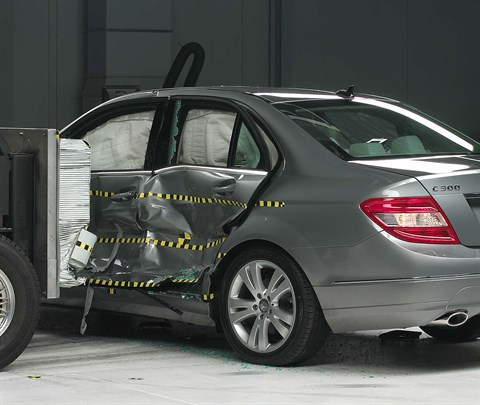
View of the vehicle and barrier just after the crash test.
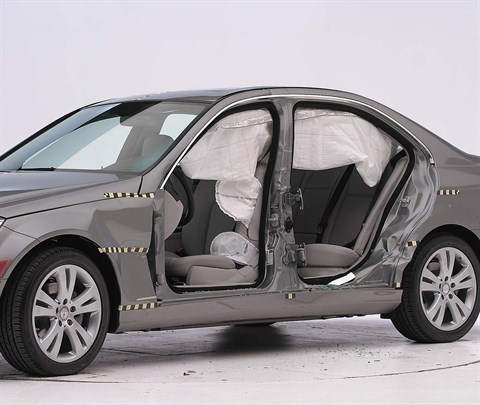
View of the vehicle after the crash with doors removed, showing the side airbags and damage to the occupant compartment.

Smeared greasepaint shows where the driver dummy's head was protected from being hit by hard structures by the side airbags.
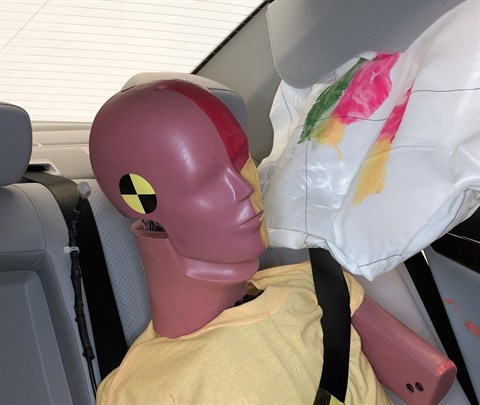
Smeared greasepaint shows where the rear passenger dummy’s head was protected by the side airbag.
Roof strength
Rating applies to 2008-14 models
Tested vehicle: 2010 Mercedes-Benz C 300 4-door
| Overall evaluation | |
|---|---|
| Curb weight | 3,510 lbs |
| Peak force | 18,826 lbs |
| Strength-to-weight ratio | 5.36 |
Head restraints & seats
Seat type: Power leather seats AHR
| Overall evaluation | |
|---|---|
| Dynamic rating | |
| Seat/head restraint geometry |
About the head restraint & seat test
Currently, IIHS tests apply only to front seats.
